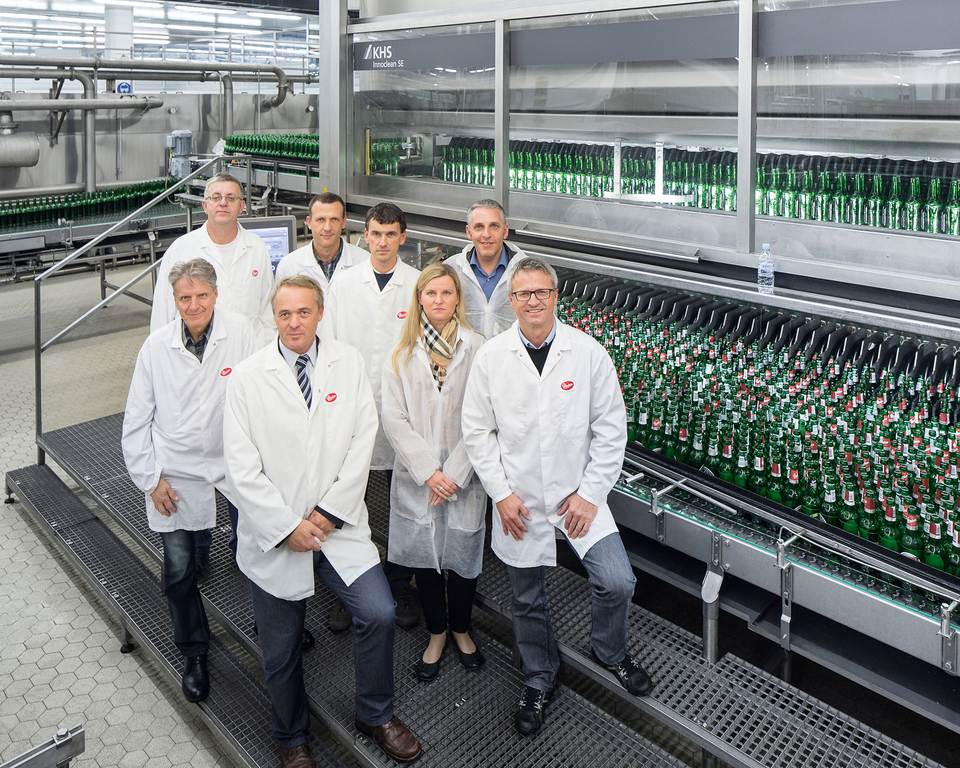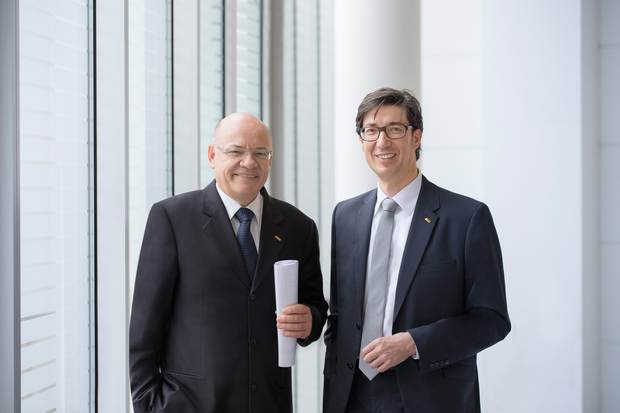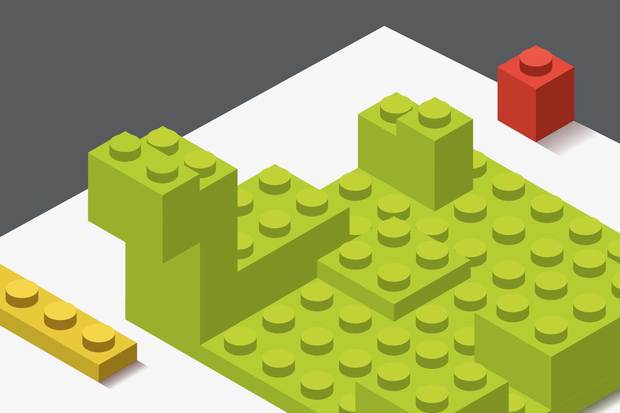When first investing in filling and packaging technology, high levels of efficiency are the top demand – understandably so, for each percentage point less in machine efficiency costs a company money. It’s therefore almost impossible to understand why some beverage bottlers put up with a steady decrease in the efficiency of their existing lines.
The reasons why a line isn’t running smoothly are often only found on closer examination. The root of the problem often doesn’t lie with the large machines but in the little details which add up and influence how disruption free production actually is. Sometimes the way things are organized within a company are the problem, these not being questioned internally as the line of argument is: “We’ve always done things this way.”
Communication is important
Some might be tempted to assume that a customer’s engineers regard KHS’ strict auditors with a certain suspicion as they fear that their operators will be studied and assessed with extreme criticism. Schlichtenbrede is quick to dispel this apprehension. “When we stand behind a production worker on site, clutching our stopwatches, of course we have to make it clear to them that we’re not assessing their performance but that of the equipment.”
Communication is essential here and this is why each line optimization process begins with a kick-off meeting where the KHS engineers are given information on the state of the line first hand – in other words, from the system operators who naturally know their machine best from working with it on a daily basis and who often have a fairly good idea of why something isn’t running as it should. Verifying and quantifying these observations during line optimization often gives the arguments voiced by production staff more weight when talking to the management. “This is why we usually receive plentyof support in our work from the engineers on site,” Schlichtenbrede explains. “Once a deficiency has been officially confirmed by us as a neutral body, this is usually the first step towards correction.”
Sometimes, however, it’s obvious that a machine has to be completely replaced before line optimization. In such cases the optimization process can provide final assurance that replacement is the correct option.
Standardized testing process
This is where KHS’ line optimization service kicks in – with the prime objective of reducing the total cost of ownership in the long term by boosting availability and the overall equipment efficiency. The KHS expert line optimization team has made it its task to find out just where the line or process is causing trouble through detailed examination, observation and measurement. Suggestions are then made on this basis as to how the problems identified can be remedied. The result is a standardized, fully developed test process which more and more customers are using and appreciating. The person responsible for line optimization at KHS is Christian Schlichtenbrede who, together with his team, has further refined the methods in practice over the last three years. “Our aim is to illustrate the actual level of performance of our customers’ equipment as objectively as possible,” he explains. “In principle we therefore provide our services much as an external machine consultant would, totally irrespective of the manufacturer of the system.”

Your contact on this topic
Christian Schlichtenbrede
Head of Service Products/KHS GmbH, Dortmund, Germany
Phone: +49 (0)231 569-10845
Email: christian.schlichtenbrede@khs.com
Increasing motivation
Occasionally there is less willingness to change than there is to have a line optimized. Smaller, owner-managed businesses often have the advantage here as shorter decision-making processes make it easier and quicker to directly implement plans of action than in a complex corporate group.
The line optimization team is noticing that a growing number of customers are extremely motivated and want to do all they can to optimize the performance of their lines. One good example is Pivovarna Union in Ljubljana, Slovenia. First, a returnable glass bottle line was audited at the brewery. All of the optimization suggestions made were then quickly implemented without exception with the result that the filling line is running much more efficiently than it has been. The suggestions also included a number of very simple measures, such as acquiring new electronic light barriers for the pallet lifts which with their frequent failures had proved to be something of an obstruction and had caused repeated downtimes in production.
Organizational aspects also played a role. In this instance, KHS suggested staggering personnel lunch breaks instead of interrupting production for this purpose. The canning line was also recently given a close inspection (see the box entitled Five questions for Andrej Varšek, technical director of Pivovarna Union). “Where cooperation is genuinely trouble free and trusting, sometimes really friendly relationships can be formed,” smiles Schlichtenbrede, pleased with the fruits of his labors.
Audit during full practical operation
The audit itself usually takes about a week. The KHS engineers arrive on a Monday and during initial talks with the customer, engineers, and employees they familiarize themselves with the machines. Roger Schwarz, an engineer on the line optimization team, describes the process. “We normally spend most of the time recording the condition of the machine. We look for potential increases in capacity by measuring data on the machines and conveyor belts. It’s important that we’re able to examine the line in full practical operation – studying each product run separately.” The auditors must be able to rely on the customer providing the required ambient conditions so that standardized processes can be adhered to. This includes, for example, freeing one or two customer employees from their usual activities in order to provide assistance during the audit. At the end of the week everyone’s a lot wiser. “During the final meeting at the end of our visit we present our first results and a week later we submit a detailed final report in writing.” In order that customers can assess the cost, effort and benefit of the suggested optimizations in relation to their urgency, in this report both the priority and cost of the measures are marked either high, medium, or low.

Conversions by customers
Most of the plant engineering inspected is between five and twenty years old. The auditors often find that the machines are very well maintained but the conveyor system is not in ideal condition. At such weak points every downed bottle or can has the potential to shut the machine down without it being attributable to the machine itself. Old machine conversions carried out by the customers themselves that prove to be less of a good idea regarding longterm availability, also present a challenge.
The various optimization measures can basically be split into three groups. The first category – if necessary – is the recommendation to completely replace a machine. This measure usually takes somewhat longer to implement. The second major group of suggestions targets general organization. The third group comprises technical optimizations of existing equipment. It very much depends on the cost as to how quickly suggestions are put into practice. Experience has shown, however, that there is always a number of suggestions for action which cost next to nothing to implement. These include changes in organization, different machine settings, or improved material quality through more careful storage.
Amazing improvisations
For the experts on the line optimization team it’s the day-to-day challenges which make their work particularly interesting; they’re repeatedly surprised to discover how well some things manage to work in regions where not everything always goes to plan. In their time the two KHS experts and their colleagues have seen some truly amazing improvised and provisional solutions – such as rubber bands used to replace springs on a machine. This also shows which conditions the machines have to cope with, for example in warmer climates where the heat is sometimes so intense that even KHS’ strict auditors have trouble concentrating. With all due care and attention, it’s thus important to keep cool on this job – often in the literal sense of the word.
Five questions for ...
1. What prompted you to commission KHS to audit your glass filling line?
We were thinking about a new glass line jointly with KHS. In this respect, we first wanted to analyze in detail what the existing line can still do and where it falls short. The results of this analysis were then taken as a basis in the planning of the new line.
2. Which results of the line audit surprised you?
Even without wanting to individually list the critical points found during the audit, I can say this much: we were very positively surprised by how quickly the KHS experts found these weak points, how precisely all elements on the line were analyzed, and how many readily implementable suggestions were made in the final report.
3. How did your employees in production react to the audit?
The audit was received very well here at Pivovarna. The employees who work on the line know that it’s in their own interest to cooperate as the analysis itself is usually the first step towards eliminating any problems. Accordingly, their contribution to the final result is considerable.
4. How has implementing the suggested optimizations affected your line efficiency?
We optimized the line in two stages, firstly in the packaging and palletizing area and then in the filling section. The line’s performance was already much improved after the first phase had been completed. I can assure you that we can now run our filling line much more efficiently and with a much higher availability than we have done to date. Our expectations have been met right down the line.
5. Are any more lines to be subjected to an audit at Pivovarna Union?
We recently had our canning line audited. We’re now studying the results and the many suggestions for improvement contained in the final report.























